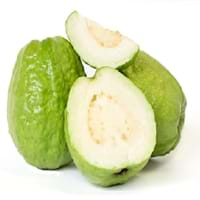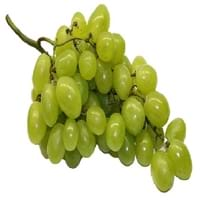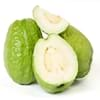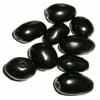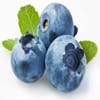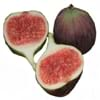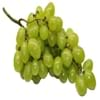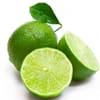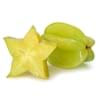Health Benefits
Cancer prevention, Diarrhea treatment, Prevents constipation, Scurvy treatment, Treatment of dysentary
Cancer prevention, Kidney stone treatment, Prevents constipation, Treatment of alzheimer's disease
General Benefits
Controls blood pressure, Cures cough, Improves eye vision, Maintains healthy cholesterol level, Treatment of common cold
Digestive aid, Improves eye vision, Maintains healthy cholesterol level, Treatment of migraine
Skin Benefits
Anti-aging benefits, Brightens and lightens complexion, Hydrates skin, Treatment of skin diseases
Anti-aging benefits, Heals sunburn, Skin rejuvenation, Treatment of dark spots
Hair Benefits
Prevents hair loss
Prevents hair loss, Regulates hair growth, Treatment of dandruff
Allergy Symptoms
Breathing difficulty, Coughing, Runny nose, Sneezing, Swelling of mouth, tongue or lips, Wheezing
Anaphylaxis, Asthma, Breathing difficulty, Coughing, Drop in blood pressure, Hives, Skin rash, Stuffy nose, Swelling of mouth, tongue or lips, Wheezing
Side Effects
Hair thinning, Nail thinning, Skin problems, Tooth decay, Weakness, Possibly unsafe during pregnancy
Allergic reaction, Skin rash, Might slow down the process of blood clotting
Best Time to Eat
As a snack in the late afternoon, Don't consume at night and before bed, Eat the fresh ones, avoid mixing with any other foods, don't eat after meal., Morning time (before lunch)
As a snack in the late afternoon, Don't consume at night and before bed, Eat the fresh ones, avoid mixing with any other foods, don't eat after meal., Morning time (before lunch)
Vitamin B5 (Pantothenic Acid)
Vitamin C (Ascorbic Acid)
Vitamin K (Phyllochinone)
Calories in Fresh Fruit with Peel
Calories in Fresh Fruit without Peel
-
-
Calories in Frozen Form
-
Type
Tree fruit, Tropical
Berry
Season
All seasons
Autumn, Summer
Varieties
Lucknow 49, Allahabad Safeda, Chittidar, Harijha, Apple guava, Hafshi, Arka Mridula and Allahabad Surkha
Cabernet Sauvignon, Merlot, Pinot Noir, Syrah/Shiraz and Zinfandel
Color
Green, Pink, Yellow
Green, Red
Inside Color
White
Light Green
Taste
Sweet-Sour
Sweet-Sour
Origin
Central America, Mexico, South America
Western Asia, Central Europe
Soil Type
Loam, Rocky, Sandy
Clay loam, Sandy loam
Climatic Conditions
Sunny
Warm
Facts about
- The black pigment in Guava leaves is used for textile applications.
- Guava leaves are used to make tea.
- Oils extracted from guava seeds are used in various cosmetics.
- Guava wood is used for decorative purposes.
- If left alone, a grapevine can spread 50 feet and even more.
- There are more than 8,000 varieties of grape worldwide.
- They are available in 7 different colors: red, green, white, black, purple, blue and golden.
Other Countries
China, Indonesia, Mexico, Nigeria, Pakistan, Philippines, Thailand
Argentina, Armenia, Australia, Chile, France, Iran, Italy, Portugal, Romania, Turkey, United States of America
Top Importer
Canada
United States of America
Botanical Name
Psidium guajava
Vitis vinifera
Subkingdom
Tracheobionta
Tracheobionta
Division
Magnoliophyta
Magnoliophyta
Class
Magnoliopsida
Magnoliopsida
Family
Myrtaceae
Vitaceae
Species
Psidium guajava
Vitis vinifera
Generic Group
Myrtle
Grape
Difference Between Guava and Grape
We might think that Guava and Grape are similar with respect to nutritional value and health benefits. But the nutrient content of both fruits is different. Guava and Grape Facts such as their taste, shape, color, and size are also distinct. The difference between Guava and Grape is explained here.
The amount of calories in 100 gm of fresh Guava and Grape with peel is 68.00 kcal and 69.00 kcal and the amount of calories without peel is - and - respectively. Thus, Guava and Grape belong to Low Calorie Fruits and Low Calorie Fruits category.These fruits might or might not differ with respect to their scientific classification. The order of Guava and Grape is Myrtales and Vitales respectively. Guava belongs to Myrtaceae family and Grape belongs to Vitaceae family. Guava belongs to Psidium genus of Psidium guajava species and Grape belongs to Vitis genus of Vitis vinifera species. Beings plants, both fruits belong to Plantae Kingdom.
